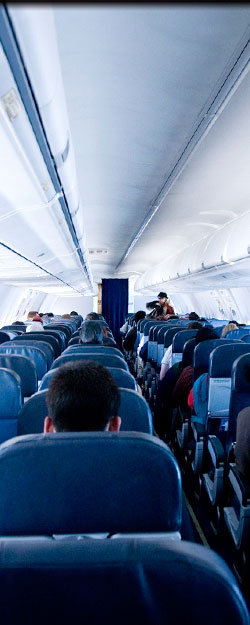The Passenger Origin-Destination Simulator (PODS)
Originally developed by Boeing in the 1990s to analyze passenger path preference and spill, PODS permits a realistic simulation of the interaction between passenger choice and revenue management in competitive airline markets.
PODS simulates the decisions of both business and leisure passengers in terms of their choice of airline flight and fare options, given two or more competitors offering different route networks, aircraft capacities, departure schedules, and multiple fare levels (each with associated restrictions) in hypothetical network environments. The simulation approach of PODS allows airlines to have different route networks, fare products, flight schedules, and RM system capabilities.
Using highly evolved algorithms, PODS simulates the interactions between passenger and airline decisions that occur in real-world air travel. The simulated passengers seek air travel in specific origin-destination (OD) markets and decide among multiple airlines, paths, and fare classes. The airline decides which air travel products (consisting of a price level and associated restrictions and/or amenities) to make available to customers based on historical booking patterns.
The figure below illustrates how PODS simulates the airline booking process with two separate but interactive components, namely, the Passenger Choice Model and the Revenue Management System.

The Revenue Management System used by each airline in PODS consists of an historical booking database, a forecaster, and a seat availability optimizer. At specified decision control points (DCPs) during the booking process, the airline’s forecaster uses historical bookings from its database to produce an estimate of future demand for each flight. Forecasts are then fed into the airline’s RM optimizer, which uses them in combination with current flight leg capacities to determine path (passenger itinerary) and fare class availability and, depending on the RM system, to set leg/class or path/class booking limits. Bookings accepted between DCPs result in the reduction of booking limits and, potentially, leg/class and/or path/class closures.
The PODS Passenger Choice Model generates passengers with individual characteristics that include the maximum they are willing to pay, the costs they attribute to schedules that do not meet their departure/arrival time preferences, itineraries that have additional stops/connects, and restrictions associated with the different fare classes offered. For each generated passenger, the complete set of path/classes offered in the market is first reduced to those with fares below the passenger’s maximum-willingness-to-pay. Then, the remaining path/classes are ranked in ascending order according to the passenger’s valuation of the fare and attributed costs of each alternative. PODS then books the generated passenger on the first available path/class of this preference list and the booking is recorded by the airline’s RM system and, in turn, historical database.

